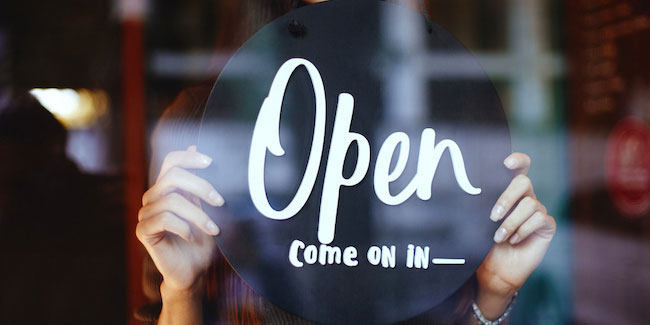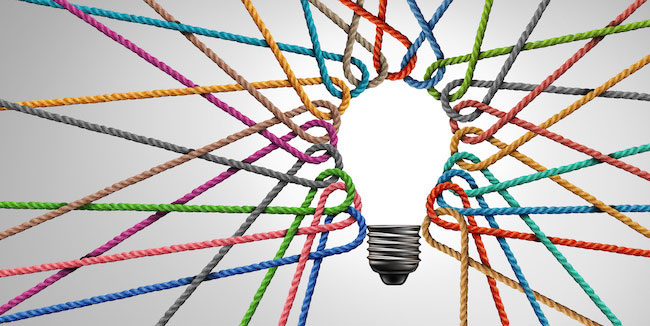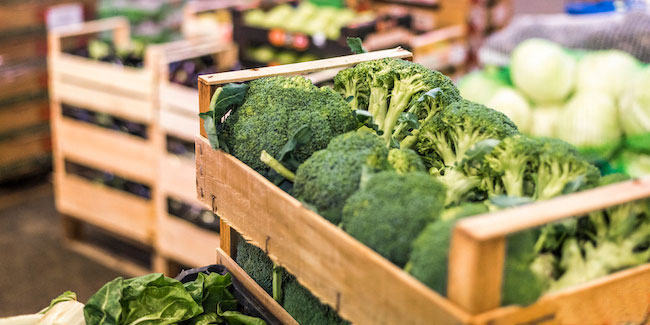••• environmental research
Is sustainability eco-friendly?
Global consumers want greener alternatives
 Environmentally friendly products are on the rise and they’re here to stay. According to consulting firm Simon-Kucher and Partners, consumers want to purchase products and services that align with their values and behaviors. To appeal to the wishes of their consumers, companies must adapt more sustainable processes to minimize the impact they and their products have on the environment.
Environmentally friendly products are on the rise and they’re here to stay. According to consulting firm Simon-Kucher and Partners, consumers want to purchase products and services that align with their values and behaviors. To appeal to the wishes of their consumers, companies must adapt more sustainable processes to minimize the impact they and their products have on the environment.
Seventy-one percent of global consumers surveyed say they are already making significant lifestyle changes. They are aware of the products they purchase and the impact they have on the environment. Sustainability is increasing in importance as 66% rank it as one of the top five factors they consider when making a purchasing decision, compared to 50% from 2021. Seventy-five percent believe sustainability is as important or even more important than it was in 2021.
Eighty-nine percent believe they have become greener with their purchasing habits by making major and minor adjustments. While most consumers want to live more sustainable lives, some are having difficulty finding products and services that don't come with a higher price point.
As inflation continues, many are finding it difficult to afford eco-friendly options and many are deciding which, if any, products or services to buy. Sixty-eight percent of consumers refuse to pay a premium for more sustainable options. (Only 32% would accept higher prices for sustainable products and services.) When asked how much of a premium they expect, answers ranged from 22% to 40%, depending on the industry and regardless of personal sustainability importance levels.
Most consumers are loyal to companies and brands that align with and share their values and beliefs. Many say the companies they trust should have similar sustainability motivators including the goal of benefiting younger generations (44%). Sixty-four percent say companies should have a sense of responsibility and 48% say they should have a fear of environmental damage.
While some companies want to be known for their sustainability processes or alternatives, some consumers question how eco-friendly those firms’ manufacturing and general processes really are. Fourteen percent think that eco-friendly alternatives are not truly sustainable because of companies’ potential greenwashing of their messages and packaging to make consumers believe they are more environmentally conscious than they really are. This has led 21% to distrust the claims companies have made about their sustainability efforts.
The study was conducted with 11,500 consumers worldwide to determine the willingness to purchase sustainable products and to gauge the attitudes surrounding sustainability.
••• small business research
Thriving or just surviving?
Small business owners reflect on life after the pandemic
 Having survived the impacts of COVID-19, 58% of small business owners surveyed believe inflation is their top challenge, according to a study conducted by Capital One, but they are confident their businesses will stay afloat, with 90% believing that they will be operating six months from now.
Having survived the impacts of COVID-19, 58% of small business owners surveyed believe inflation is their top challenge, according to a study conducted by Capital One, but they are confident their businesses will stay afloat, with 90% believing that they will be operating six months from now.
Throughout the past year, a variety of other factors have weighed on small business owners. Twenty-two percent fret about competition from larger businesses, 35% are concerned about low sales and 40% are worried about cash flow. Fifty-one percent of owners have experienced higher costs for materials and supplies and 36% have encountered shipping delays. Small business owners have also seen higher delivery and shipping costs (37%) and supply disruptions and product shortages (37%), all of which have affected their businesses.
Some rising concerns for small business owners revolve around the state of the economy. Seventy-seven percent are worried of the potential contraction of the U.S. economy and 78% stress over supply chain issues, leading 76% of small business owners to fear the negative impacts their businesses could face within the next six months.
Fifty-three percent of small business owners are still feeling the impacts of COVID-19, from its effects on regular operations to sales and staffing. Many businesses adjusted how they hire and what they offer to their employees during the pandemic. Forty-nine percent say no changes were made to their hiring practices since 2021 while 25% say they now offer more flexible hours and 13% offer remote-working options. While 18% are offering competitive wages, 44% say they find it difficult to meet the wage demands of potential employees and 39% say they struggle to find qualified candidates for their open positions.
While some business owners struggled to stay afloat throughout the pandemic, others saw it as a fitting time to begin their business endeavors (though 79% say the pandemic made it both very and somewhat challenging to start a business). New business owners say low sales (36%), inflation (42%) and cash flow (40%) were hurdles they had to overcome and 70% say they either slightly or completely changed how they operated after starting their businesses by adjusting their business models or offerings.
New business owners say they began their businesses during the pandemic because they had more time on their hands (36%), had access to funding that they didn't have before (17%) or had already planned to start a business (21%). Others say they quit to start a business (21%), were laid off and started a business (26%) or had a hobby or side job they turned into a business (24%). Forty-one percent of new owners found that networking, online trainings (36%), online articles (24%) and local or virtual business associations (22%) were helpful resources when starting during the pandemic.
Thirty-five percent of owners say local business conditions are good, 43% say they are fair and 11% say they are poor. Most owners however say it is rewarding to work for themselves and they enjoy having flexible schedules and more time to spend with their families.
Capital One and Morning Consult partnered to conduct this survey with 1,295 small business owners in the U.S. from August 25-September 9, 2022.
••• beverage research
Thirsty for more
Of all the forms of water available, consumers prefer it bottled
 Whether you drink it flavored, sparking or straight from the tap, varying attitudes over water intake are unavoidable. A study conducted by the International Bottled Water Association (IBWA) found that Americans have strong viewpoints towards bottled water. Eighty-eight percent of U.S. adults have positive opinions towards it and many consider water their most preferred non-alcoholic beverage choice.
Whether you drink it flavored, sparking or straight from the tap, varying attitudes over water intake are unavoidable. A study conducted by the International Bottled Water Association (IBWA) found that Americans have strong viewpoints towards bottled water. Eighty-eight percent of U.S. adults have positive opinions towards it and many consider water their most preferred non-alcoholic beverage choice.
Ninety-one percent believe that bottled water should be available where other beverages are sold. If bottled water isn't sold, 70% of people who prefer it would purchase a different packaged beverage. Twenty-two percent say they would choose soda, 10% would pick sweetened, sparking or flavored water, 8% would get a sports drink (like Gatorade or Powerade) and 5% would choose a juice or fruit drink. If water is unavailable, 10% would drink from a watercooler, 10% would drink filtered tap water, 4% would drink from a public water fountain and 6% would drink unfiltered tap water.
Most Americans drink a mixture of bottled and tap water (72%) while 8% only drink tap or filtered water and 19% exclusively drink bottled water. Only 1% of respondents indicated that they do not drink water.
Many factors come into play when deciding on which drink to buy. Respondents like the ready-to-go feature (79%), the ability to reseal a beverage (77%) and 81% like the convenience of a bottled beverage. The top three factors however are quality (96%), taste (96%) and safety (90%).
Eighty-three percent of Americans say water is their preferred beverage with bottled water, including sparkling, still and flavored and/or unflavored being the top non-alcoholic choice. Forty-two percent have a somewhat positive opinion and 45% percent have a very positive opinion of bottled water while only 12% have a negative outlook including 2% who have very negative opinions.
Drinking bottled water has an inevitable impact on the environment whether through the manufacturing and packaging of the water bottle itself or its disposal. Ninety percent of consumers agreed that it is important to recycle all recyclable packaging, 89% agree that making products with already recycled materials is better for the environment and 72% agree that they would purchase products that have already been recycled.
Seventy-eight agree that because plastic can be recycled and reused, it is a valuable source. Sixty-one percent believe that products made from plastic are more eco-friendly compared to materials made from glass, aluminum or cartons. Water bottles are fully recyclable, making up 49% of the plastic collected in U.S. curbside systems.
Most agree that products should be recycled when possible but who should oversee the process? Sixty-four percent say consumers should take responsibility for recycling their plastic bottles, 58% believe the companies selling them should figure out the recycling process and 47% say the government should take charge.
Bottled water is most often consumed while shopping and on-the-go (74%), at sporting or entertainment events (73%) and while at the gym or when exercising (67%). Eighty-four percent say they drink bottled water at work, 81% drink it at home and 77% drink it at social events.
This survey was conducted by The Harris Poll on behalf of the IBWA. It was conducted with 2,057 U.S. adults from September 19-21, 2022.
••• dei research
Company DEI initiatives impact consumer habits
Black consumers notice sociopolitical stances
 Companies are incorporating more diversity, equity and inclusion (DEI) efforts within their business models to fully establish their viewpoints on various issues and as they are doing so and taking stances on sociopolitical issues, many Black consumers have taken note and adjusted where they place their support.
Companies are incorporating more diversity, equity and inclusion (DEI) efforts within their business models to fully establish their viewpoints on various issues and as they are doing so and taking stances on sociopolitical issues, many Black consumers have taken note and adjusted where they place their support.
Horowitz Research conducted its FOCUS Black: State of Consumer Engagement 2022 study and found that Black consumers are more likely to act after a company makes a sociopolitical stand. Fifty-eight percent of Black customers have altered their consumer habits after a company aligned with a specific sociopolitical issue. The actions taken were both negative and positive. If consumers did not align with the company's message, they reduced the number of purchases they made or stopped being a customer. If they approved of the stand the company made, they took positive action by spending more or becoming a consistent consumer.
Black consumers are more likely to speak out and sign petitions against companies that take sociopolitical stances they disagree with and reward companies they align with by doing more business with them.
When offered company policy examples, equal treatment of women (66%) and policies that ensure LatinX/Hispanic, Asian and Black employee consideration for positions at companies (62%) impacted Black consumers’ decisions positively.
Consumers have no trouble discerning between authentic and inauthentic initiatives. Forty-four percent of Black consumers say that more companies are depicting insincere DEI initiatives compared to a year ago. However, 45% say they’re seeing more companies who want to make a real impact and do better with the initiatives they have put in place.
Forty-four percent say they are also noticing companies investing in their neighborhoods, whether by creating more jobs or helping improve area schools. As well, the entertainment industry is changing. Fifty-five percent say Black characters are being shown in a better light and 57% say more Black actors are being cast as leads in shows. They say comedies, dramas and original content positively show Black characters while lifestyle and dating reality shows, sci-fi and the news portray Black people and characters negatively.
The FOCUS Black: State of Consumer Engagement 2022 survey was conducted by Horowitz Research. It was conducted with 1,800 adults in July 2022.
••• food research
Meal kits pick up the slack
Restaurant restrictions led to DIY meals
 Post-pandemic restaurant capacity restrictions and shutdowns resulted in a drastic reduction of meal outings but that didn’t stop people from finding and purchasing alternatives. Many decided to limit their excursions and dine more at home. However, whether due to convenience, general interest or health reasons, many consumers turned to meal kit delivery services like HelloFresh, Blue Apron and Home Chef. According to consumer services platform Drop, as reported in a survey conducted by insights platform Upsiide, after the pandemic hit in March 2020, meal kit orders increased by 92% .
Post-pandemic restaurant capacity restrictions and shutdowns resulted in a drastic reduction of meal outings but that didn’t stop people from finding and purchasing alternatives. Many decided to limit their excursions and dine more at home. However, whether due to convenience, general interest or health reasons, many consumers turned to meal kit delivery services like HelloFresh, Blue Apron and Home Chef. According to consumer services platform Drop, as reported in a survey conducted by insights platform Upsiide, after the pandemic hit in March 2020, meal kit orders increased by 92% .
Forty-six percent of Canadians and 36% of Americans placed their initial order because they had a coupon or discount for the service. Twenty percent of consumers believe that purchasing meal kits saves more money than ordering from a restaurant. But saving money is not the only factor when ordering from a meal kit service: Many are interested in cooking as a hobby and use meal kits to spark inspiration.
Upsiide calculated consumers’ scores for importance and satisfaction to establish the most important meal kit features. Reducing the amount of money spent on food hit a 101, minimizing the amount of cooking prep time totaled a 92, the ability to minimize food waste scored a 90 and the healthiness of the meals resulted in an 89. Ninety percent believe it is very or somewhat important to gain exposure to new recipes and ingredients. Eighty-six percent are satisfied with the option to try new food items.
Meal kits hit success after the pandemic but they are declining in popularity as the world attempts to return to normal. Twenty-four percent of respondents ordered weekly when they first began using the services. Thirty percent ordered a few times a month, 20% ordered monthly, 10% ordered every two to three months and 9% only ordered once. When asked about their current meal kit service use, 21% indicated that they order once a week and 24% say they order a few times a month. Sixteen percent are monthly users, 11% order every two to three months and 12% never use meal kit services. The declining use of meal kit services may be a result of the reopening of the world or the decrease in coupons offered after the initial order or a mixture of both.
Meal kits served as a replacement for dining out for many, which may have justified their prices for some. However 65% percent believe that meal kit services are too expensive. Thirty-eight percent would rather purchase their own ingredients, 19% prefer their own recipes and 25% believe the process is too much work. Twenty-five percent of respondents say that the services do not offer options that fit with their dietary needs. Upsiide found that people with dietary restrictions, including those who are following vegan or keto diets or are gluten-intolerant, etc., are in a niche category but would be consistent consumers, devoted to meal kit services that offer options that fit their lifestyles. Another untapped area meal kit services could dive into is the “heat and eat” sector of meal delivery as both Americans and Canadians indicated that they would be interested in a service that offered already-prepared meal options.
This study surveyed 500 U.S. and 500 Canadian adults.
